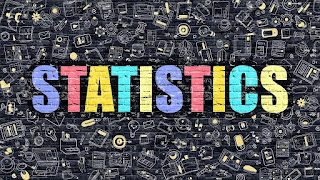Epidemiological Transition
Epidemiological Transition
Description also available in video
format (attached below), for better experience use your desktop
Introduction
·
Epidemiological transition is a theory that
describes the changing patterns of disease and mortality within populations as
they undergo social and economic development
·
It helps to characterize the change in
population
·
This is a stage of development characterized by
a shift in
o
Population growth
o
Life expectancy
o
Disease patterns
Theory of Epidemiologic Transition
· The theory of epidemiological transition consists of 5 main propositions
o Proposition One
§ Theory begins with the major premise that mortality is a fundamental factor
in population dynamics
o Proposition Two
§ During the transition, a long-term shift occurs in mortality and disease
patterns
§ On the other hand, pandemics of infection are gradually displaced by
degenerative and man-made diseases
o Proposition Three
§ During the epidemiologic transition the most profound changes in health
and disease patterns obtain among children and young women
o Proposition Four
§ Epidemiologic transitions are closely associated with the demographic
and socioeconomic transitions
o Proposition Five
§ Variation in the pattern
§ Variation in the pace
§ & the determinants of population change give births to 3 different
models of epidemiologic transition
·
Western model
·
Accelerated model
·
Delayed model
Stages of Epideiological Transition
·
Stage 1 (Pestilence and
Famine)
o
Infectious and parasite diseases were principle
causes of death
o
Thomas Malthus called these caused of death “Natural
Checks”
o
The best example for the stage 1 is
§ Black Plague (Transformed to humans by fleas from infected rats)
·
Stage 2 (Receding
Pandemics)
o
Reduction in the spread of infectious disease
because of
§ Improved sanitation
§ Improved nutrition
§ Improved medicine
o
Death rate did not improve immediately
o
Poor people crowded by industrial cities had high
death rates due to cholera
·
Stage 3 (Degenerative
Disease)
o
Associated with the chronic disease of aging
o
Example can be the heart disease and cancer
o
Areas having low life expectancy have low
incidences of cancer like South Asia
·
Stage 4 (Delayed
Degenerative)
o
Life expectancy of older people is extended through
medical advances
o
Reduction in the use of tobacco & alcohol
because of
§ Cancer medicines
§ Bypass surgeries
§ Better Diet
o
Consumption of non-nutritious food results in the
increase in obesity in this stage
The epidemiological transition model provides a
framework for understanding how changes in social, economic, and environmental
factors influence disease patterns and mortality rates within populations. It
helps policymakers and public health officials anticipate and respond to
emerging health challenges and prioritize resources for disease prevention,
healthcare delivery, and health promotion initiatives.
Video Description
· Don’t forget to do these things if
you get benefitted from this article
o Visit our Let’s contribute page https://keedainformation.blogspot.com/p/lets-contribute.html
o Follow our page
o Like & comment on our post
·




Comments